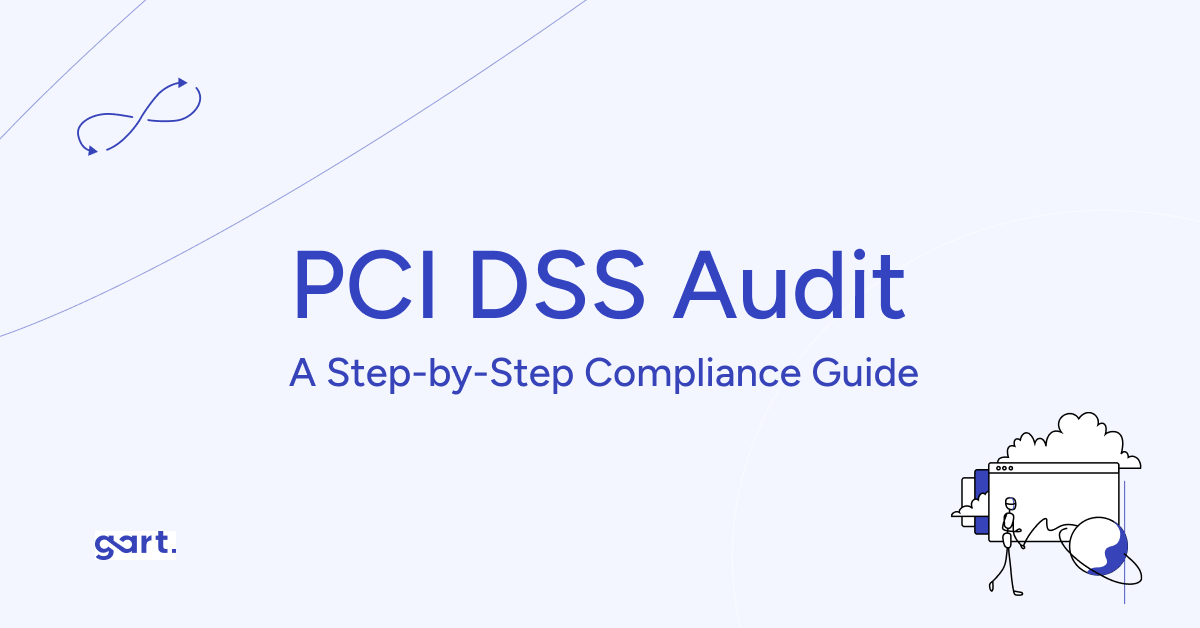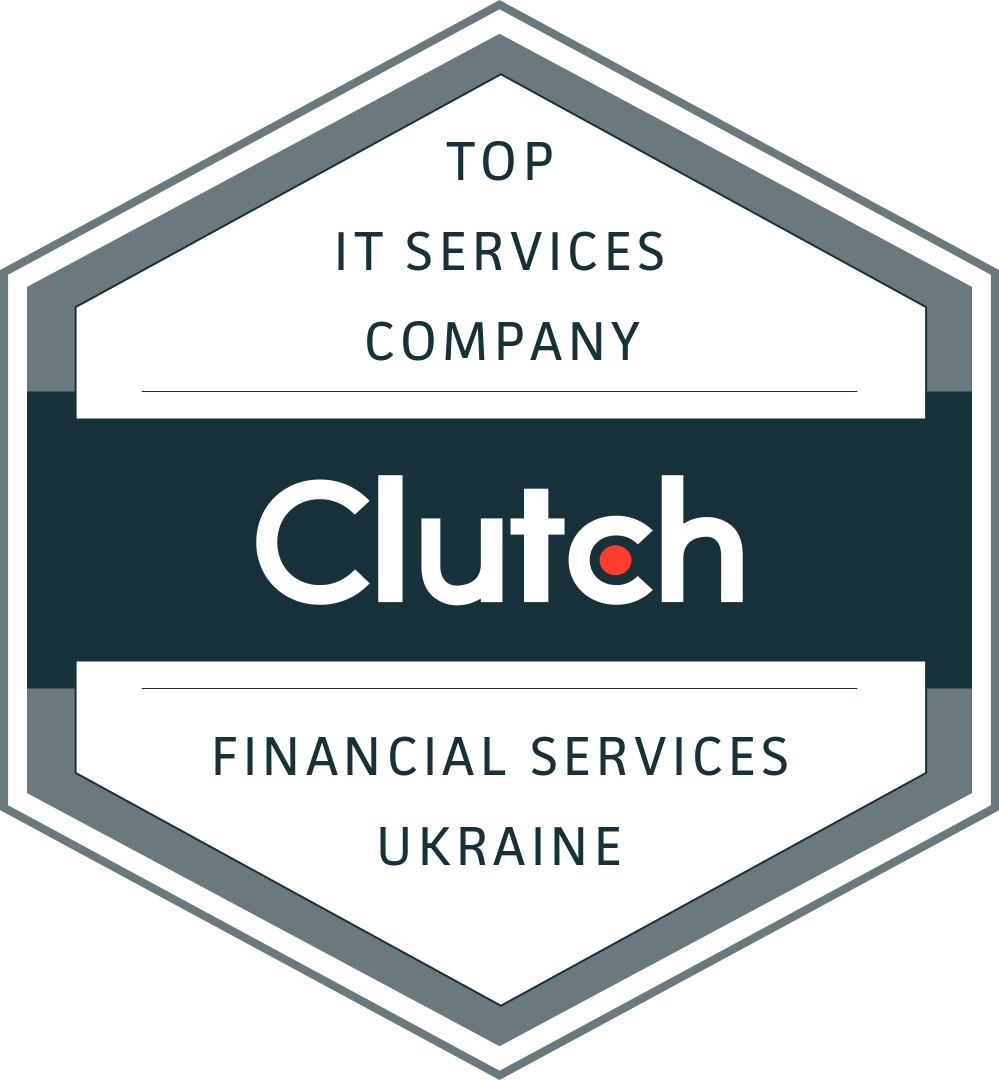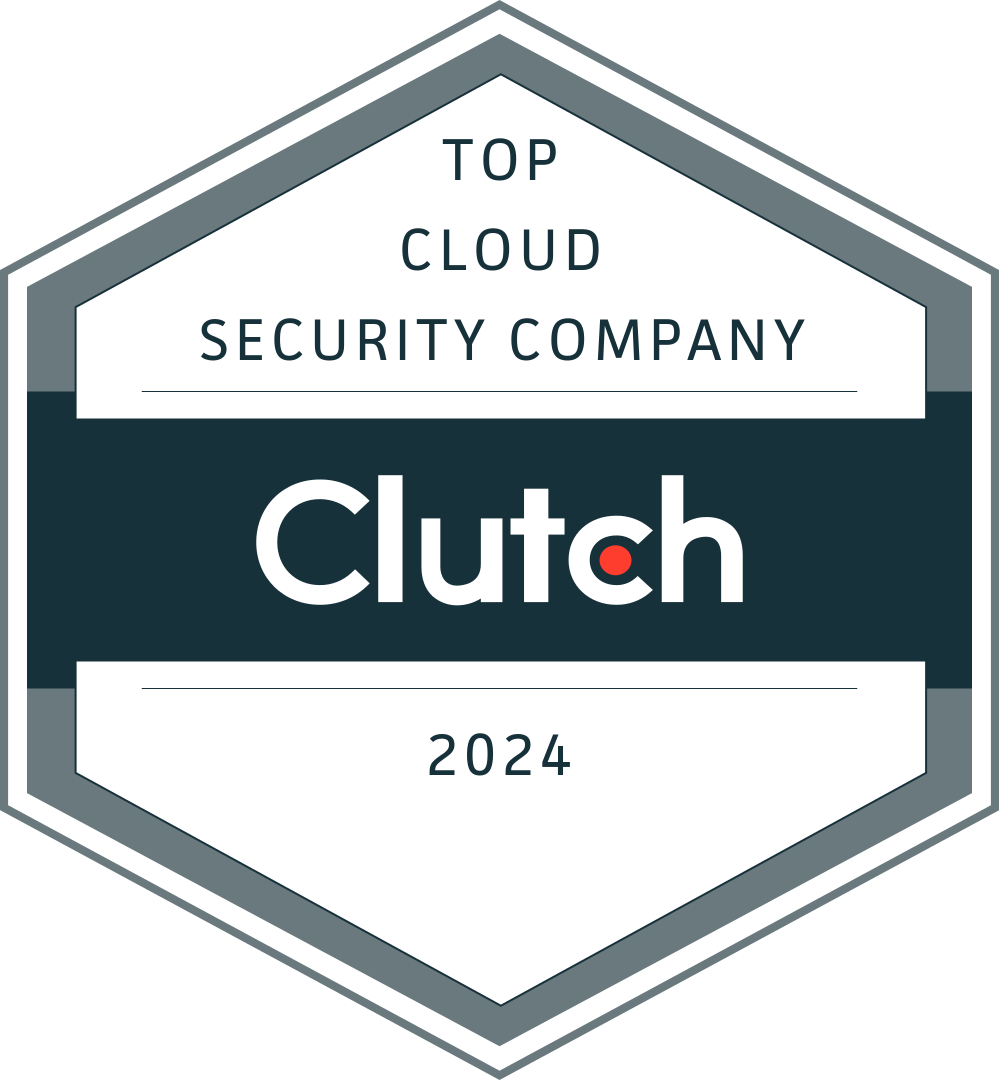
What is SOX compliance and why does it matter?SOX compliance refers to adhering to the Sarbanes-Oxley Act of 2002, a U.S. law requiring public companies to maintain accurate financial reporting and strong internal controls. Non-compliance can lead to severe penalties, reputational damage, and executive liability.
SOX Compliance is all about following the rules set by the Sarbanes-Oxley Act of 2002, a U.S. law designed to protect investors by making sure companies report their financial information accurately. This law came into play after major scandals like those at Enron and WorldCom shook public trust in corporate finances. By enforcing stronger internal controls and holding company executives accountable for the accuracy of their reports, SOX aims to improve transparency and prevent financial fraud in publicly traded companies, both in the U.S. and for some foreign firms listed here.
SOX Audit Penalties
Non-compliance with SOX can result in severe consequences, including:
Financial Penalties: Companies may face fines or removal from stock exchanges for failure to comply.
Personal Liability: Executives (CEOs, CFOs) may face personal fines up to $5 million and up to 20 years in prison for willfully submitting inaccurate financial reports.
Reputational Damage: Non-compliance can result in a loss of investor confidence and damage to the company’s reputation.
The Sarbanes-Oxley Act: What is a SOX Audit?
Enforcement Date: July 30, 2002Applicability: All U.S. public companies, companies looking to go public, and their auditors.
SOX applies to companies planning an initial public offering (IPO), including special purpose acquisition companies (SPACs). It mandates corporate reforms designed to increase accountability in financial disclosures, ensuring there is a transparent and reliable reporting process for investors.
The audit must be performed by an independent external auditor and cannot overlap with other company audits, ensuring there is no conflict of interest. If a company fails to meet the audit’s requirements, it may face significant legal and financial consequences, such as losing public trust and penalties.
The Purpose of the Sarbanes-Oxley Act
In the early 2000s, a series of financial scandals shattered public trust in large corporations. Fraudulent financial reporting at companies like Enron and WorldCom led to billions in losses for investors. In response, Congress passed the Sarbanes-Oxley Act (SOX) to restore faith in corporate America by mandating strict reforms in corporate governance and financial disclosure.
Main Goals of SOX:
Improve the accuracy and reliability of corporate disclosures.
Hold senior executives accountable for the integrity of financial reports.
Establish strong internal controls over financial reporting to detect fraud and irregularities.
Enhance the role of independent auditors.
Key SOX Compliance Sections
Some of the critical sections of the Sarbanes-Oxley Act include:
Section 302: Corporate responsibility for financial reports. This holds senior executives (CEO, CFO) accountable for the accuracy of financial reports.
Section 401: Disclosures in financial reporting, ensuring transparency and accuracy in public financial records.
Section 404: Management’s assessment of internal controls, which requires an annual audit to test and verify internal controls.
Section 409: Real-time issuer disclosures, ensuring timely public notification of any material changes in financial condition.
Section 802: Criminal penalties for altering or falsifying documents.
Section 906: Corporate responsibility for accurate financial reports, enforcing transparency and holding executives accountable.
While SOX consists of 11 sections (or "titles"), Sections 302 and 404 are the most critical for compliance.
Section 302: Corporate Responsibility for Financial Reports
Accountability of Executives
This section mandates that the CEO and CFO are personally responsible for the accuracy of financial reports. They must certify that the company’s financial statements are accurate and complete.
Internal Controls
These executives must establish and maintain adequate internal controls to ensure accurate financial reporting. This includes evaluating and certifying the effectiveness of these controls.
Disclosure of Deficiencies
Any significant deficiencies, fraud, or material changes in internal controls must be disclosed in financial reports.
Section 404: Management Assessment of Internal Controls
Annual Internal Control Reports: Companies must include a detailed report on the effectiveness of internal controls over financial reporting in their annual reports.
Evaluation of Controls: Management is responsible for assessing and maintaining adequate internal control structures and must provide an attestation on their effectiveness.
External Audits: Independent auditors must review the company’s internal controls, ensuring they are functioning correctly. The audit must be performed with a high degree of professional skepticism and independence.
End of Self-Regulation: The Public Company Accounting Oversight Board (PCAOB) was established under SOX to oversee audit standards and prevent self-regulation, which had previously allowed fraud to go undetected.
The Importance of Internal Controls
A large part of SOX compliance centers on internal controls over financial reporting (ICFR). Internal controls refer to the processes and procedures that ensure the accuracy of a company's financial information. A SOX audit examines the design and effectiveness of these controls.
Some key areas covered under SOX audits include:
Access controls: Ensuring only authorized personnel can access sensitive financial information.
Data management: Protecting data integrity and ensuring accurate financial reporting.
IT controls: Verifying that the company’s IT systems (network, databases, applications) are secure and functioning properly.
SOX places heavy reliance on technology, particularly for managing IT assets and securing sensitive financial data.
SOX Compliance Checklist
Here’s a summary of what needs to be done to ensure compliance with SOX:
Data Integrity: Implement measures to prevent financial data tampering.
Audit Timeline: Establish and adhere to a clear audit schedule.
Data Access Controls: Verify who has access to what data and ensure accountability.
Ongoing Monitoring: Regularly test the effectiveness of internal controls, not just during audits.
Fraud Detection: Implement processes for identifying and responding to fraud attempts.
Security Breach Reporting: Ensure transparency in reporting any security breaches.
Automation: Implement automated controls wherever possible to enhance reliability and accuracy.
Risk Assessment: Regularly assess risks to identify new or emerging threats to financial reporting.
SOX-Compliance-ChecklistDownload
The Challenges of SOX Compliance
Meeting SOX compliance can be tough for many companies, especially when it was first introduced. One of the biggest initial challenges was the high cost associated with compliance, particularly with Section 404. Implementing strong internal controls and conducting regular audits was not only time-consuming but also expensive.
As time has gone on, the costs of compliance have continued to rise. New requirements from external audits and the introduction of frameworks like COSO have added to the financial burden. Companies must invest heavily in technology and hire skilled personnel to keep up with these demands, leading to worries about the growing financial impact of SOX.
Another major hurdle is the significant resource burden that compliance creates. Organizations need talented individuals who can manage internal controls, conduct audits, and maintain detailed documentation. This is especially challenging for smaller companies, which often struggle to find the manpower and budget necessary to meet these compliance requirements.
How We at Gart Solutions Can Help with SOX Compliance
At Gart Solutions, we understand that navigating the challenges of SOX compliance can be daunting. That's why we’re dedicated to helping businesses meet the requirements of the Sarbanes-Oxley Act. Here’s how we support your organization:
Cloud Infrastructure and Security
SOX compliance demands a secure infrastructure to protect financial data. We provide cloud services that ensure your data is safely stored and managed. Our key offerings include:
Data Encryption: We encrypt your data both at rest and in transit to prevent unauthorized access.
Access Controls: We implement multi-layered access management, like role-based access and multi-factor authentication, ensuring only authorized personnel can access sensitive information.
Audit Logs and Monitoring: We create detailed audit trails and monitoring systems to track user activities, essential for transparency.
Disaster Recovery and Backup Solutions: We ensure your financial data is securely backed up and have a disaster recovery plan in place to prevent data loss.
DevOps Automation for SOX Compliance
Our DevOps practices introduce automation that is critical for maintaining compliance. Here’s how we enhance SOX compliance:
Automated Deployment Pipelines: We streamline the deployment of financial reporting systems, minimizing the risk of errors and downtime.
Configuration Management: We automate the setup of IT systems to ensure everything is consistently and correctly configured.
Continuous Monitoring: We use DevOps tools to continuously monitor your environment and alert you to any unusual activity, aligning with SOX’s real-time reporting requirements.
Compliance-as-Code: We apply Infrastructure-as-Code principles to maintain a compliant infrastructure that is always ready for audits.
IT Controls and Risk Management
Strong IT controls are vital for SOX compliance, particularly regarding data access and financial reporting. We help implement these controls by:
User Access Management: We enforce strict access control to ensure that only authorized individuals have access to financial data.
Change Management: We establish processes to track and document all changes to IT systems, which meets SOX requirements for well-documented internal controls.
Audit-Ready Infrastructure: We create infrastructure solutions that are always optimized for compliance, making audits straightforward.
Data Integrity and Automation
We know that maintaining data integrity is crucial for financial reporting. Our services ensure your data is accurate and secure:
Automated Data Validation: We implement automated checks that validate the accuracy of financial data before it’s reported.
Automated Backup and Version Control: Our solutions automate data backups and track changes, making audits easier.
Continuous Integration/Continuous Deployment (CI/CD): We utilize CI/CD pipelines to systematically test and deploy updates, reducing the risk of manual errors.
Real-Time Monitoring and Incident Response
Monitoring financial systems and reporting incidents is essential under SOX. We provide real-time monitoring services to help you quickly address any risks:
Security Information and Event Management (SIEM): We use SIEM tools to give you real-time visibility into potential security incidents.
Incident Response Automation: Our automation ensures that any issues are addressed swiftly, maintaining data integrity.
Audit Preparation and Reporting
Preparing for SOX audits can be overwhelming, but we make it easier:
Automated Compliance Reports: We automate the generation of necessary reports for audits, such as access logs and system changes.
Documenting Internal Controls: Our solutions help you document your processes, ensuring you’re always audit-ready.
Audit Trail Maintenance: We ensure you have a complete and accurate audit trail for all financial transactions and system changes.
Cybersecurity and Data Protection
Cybersecurity is crucial for SOX compliance, and our services help protect your financial data from breaches:
Vulnerability Assessments: We regularly conduct assessments to identify and mitigate security risks in your financial systems.
Data Encryption and Protection: We ensure all sensitive financial data is encrypted to safeguard it from unauthorized access.
Compliance with IT Security Standards: We align your IT security protocols with industry standards that support SOX’s requirements.
By partnering with us at Gart Solutions, you can navigate the complexities of SOX compliance while enhancing your financial integrity and operational efficiency. Let us help you achieve and maintain compliance with confidence!

Hey there! Let's talk about PCI DSS Audit. It's a big deal for anyone dealing with credit card info.
What is PCI DSS and why is it important?PCI DSS (Payment Card Industry Data Security Standard) is a global security standard designed to protect cardholder data. It applies to any organization that stores, processes, or transmits credit card information.
Quick summary:
🏷 PCI Definition: PCI stands for Payment Card Industry, and the PCI DSS (Data Security Standard) is designed to protect cardholder data during payment processing. The standard applies to any entity that stores, processes, or transmits cardholder data.
🏗️ 80 hours: The estimated minimum time required for most organizations to prepare for PCI compliance, especially if they handle card data.
🎯 4 to 6 weeks: The average time needed for evidence review during the audit process, based on the organization’s preparedness.
🛡️ Up to $100,000: The potential financial penalties for non-compliance, emphasizing the importance of adherence to PCI DSS standards.
So, what's PCI DSS? It's basically a set of rules to keep credit card data safe. Think of it as a security checklist for businesses that handle card payments.
Back in the day, each credit card company had its own security rules. Can you imagine how confusing that was for businesses? It was like trying to follow five different recipe books to bake one cake!
What is PCI DSS?
So in 2006, the big credit card brands (Visa, MasterCard, Discover, JCB, and American Express) got together and said, "Let's make one set of rules everyone can follow." And boom! PCI DSS was born.
Now, if your business takes credit card payments, you need to follow these rules. It's not just about avoiding fines (though that's important too). It's really about protecting your customers' info and keeping their trust.
Getting PCI certified can seem scary, but don't worry! It's just about proving you're following the rules and keeping card data safe.
Want to know more about how to get certified or what exactly you need to do? Just ask, and I'd be happy to break it down further!
Key PCI DSS Facts at a Glance
🏷️ Definition: Security rules for processing credit card data
⏳ Prep Time: ~80 hours for initial audit readiness
📅 Audit Review Time: Typically 4–6 weeks
💰 Non-Compliance Penalties: Up to $100,000 per incident
Who Must Comply?
Organizations that handle payment data are required to comply with PCI DSS. This includes:
Merchants (e.g., retailers like Walmart) that collect cardholder data during transactions.
Service providers (e.g., companies like AT&T) that store, process, or transmit this data.
Financial institutions that facilitate payments and transfers.
The scope of PCI DSS Audit is broad, encompassing any entity that stores, processes, or transmits cardholder data.
PCI Certifications
There are a few different PCI certifications out there. They're like badges that show you know your stuff when it comes to keeping credit card info safe. Here's the rundown:
PCI Professional (PCIP): This is the beginner's badge. It's like learning the ABCs of credit card security. It enables professionals to develop a secure payment environment.
Internal Security Assessor (ISA): This one's for people who check if their own company is following the rules. But here's the catch - if you leave the company, you can't take this badge with you.
Qualified Security Assessor (QSA): These are the pros who check if other companies are following the rules. And good news - if they switch jobs, they get to keep their badge!
Associate QSA (AQSA): This is like a "QSA in training" badge. It's perfect for newbies just starting out.
The Core Components of PCI DSS
Think of PCI DSS Audit as a big security checklist. It's got 12 main things to do, grouped into six big ideas:
Build a strong digital fence: Set up firewalls and make sure your security settings are top-notch.
Guard the treasure: Keep card info safe when it's sitting still and when it's moving around.
Stay on your toes: Keep your systems up-to-date and patch up any weak spots.
Don't let just anyone in: Only let the right people see card info.
Keep watch: Always be on the lookout for any funny business in your network.
Have a game plan: Write down how you're going to keep everything secure and stick to it.
Getting Ready for Your PCI Certification Audit
So you're gearing up for a PCI certification audit? Don't sweat it! I'm here to walk you through the key steps to get you ready. Let's break it down:
1. Figure Out What Needs to Be Checked
First things first, you need to know what parts of your business the auditors are going to look at. This is called understanding your "compliance scope."
What to do: Make a list of all the places in your company that handle credit card info. This includes computers, networks, even paper files if you still use those!
Pro tip: Try to make this list as small as possible. The fewer places that deal with credit card data, the less stuff you need to protect. It's like cleaning your house - the less clutter you have, the easier it is to keep tidy!
How to shrink your list:
Separate your credit card handling systems from the rest of your network. It's like putting all your valuables in a safe instead of leaving them all over the house.
Use something called "tokenization." This replaces credit card numbers with random codes. It's like using a secret language that only you understand.
Use special encryption when you're taking payments. This scrambles the credit card info right away, so you never actually see or store the real numbers.
2. Do a Practice Run
Before the real PCI DSS Audit, it's smart to do a practice run.
What to do: Pretend you're the auditor. Go through everything and see if you can spot any problems.
Why it's important: It's like proofreading an essay before you hand it in. You can catch and fix mistakes before they cost you points!
3. Get Your Paperwork in Order
Auditors love paperwork. They're going to ask for a lot of documents, so have them ready.
What you'll need:
Maps of how credit card info moves through your systems. Think of it like a treasure map, but for data!
Pictures of how your computer networks are set up.
Your rulebook for keeping credit card info safe. This includes stuff like who's allowed to see the data and how you keep it locked up.
Pro tip: Keep all these docs in one place, easy to find. It's like having a well-organized file cabinet.
4. The Big Day: PCI DSS Audit Time
When the auditors show up, here's what to expect:
They'll double-check that you were right about what needs to be audited.
They'll go through all those documents you prepared.
They might want to chat with your team or see how things work in action.
How to ace it: Be honest, be helpful, and don't panic if they find something small. Sometimes you can fix little issues right on the spot!
5. After the PCI DSS Audit: Fixing What Needs Fixing
Once the audit's done, you might have some homework:
If the auditors found any problems, now's the time to fix them.
They'll give you a report card (called a Report on Compliance) and a certificate (Attestation of Compliance) if you passed.
Remember, this whole process isn't about making your life difficult. It's about making sure you're keeping your customers' credit card info super safe. And that's something to be proud of!
Continuous Compliance: A Year-Round Effort
PCI DSS compliance is not a one-time achievement; it is an ongoing process. Think of PCI DSS compliance like keeping your house clean. You can't just do a big clean once and forget about it. Nope, it's an everyday thing!
Some stuff you gotta do daily (like checking your security logs - it's like making sure you locked the door before bed).
Other things are weekly or monthly (kinda like vacuuming or changing the sheets).
And don't forget the quarterly and yearly big cleans (like those vulnerability scans - think of it as checking for cracks in your home's foundation).
Here's the kicker: Your "clean house certificate" (aka your compliance) only lasts a year. Then you gotta prove you're still keeping things tidy all over again!
How Gart Solutions Can Help You with PCI DSS Compliance
Getting PCI DSS compliant can feel overwhelming, but Gart Solutions is here to make it easier for you! As a top provider of DevOps, cloud, and infrastructure solutions, we can guide you every step of the way. Here’s how we can help:
1. Understanding PCI DSS Requirements
We know that PCI DSS has a lot of rules to follow. Our team will help you break down the 6 Key PCI DSS Principles and 12 Requirements so you know exactly what you need to do to keep your customer’s card information safe.
2. Preparing for Your PCI Certification Audit
When it’s time for the PCI Certification Audit, we’ll be right by your side:
Gap Assessments: We’ll check your systems to see where you stand compared to PCI requirements and help you fix any gaps.
Document Support: We’ll help you gather all the paperwork you’ll need for the PCI DSS Audit, making sure everything is organized and ready for the auditors.
3. Building a Secure Infrastructure
We specialize in creating safe cloud infrastructures. Here’s what we can do for you:
Firewalls: We’ll set up strong firewalls to protect sensitive card information.
Encryption: Our team will ensure that data is scrambled during storage and transmission, keeping it safe from prying eyes.
Access Controls: We’ll help you put strict access controls in place so only the right people can see cardholder information.
4. Ongoing Monitoring and Testing
Compliance isn’t a one-time thing; it’s an ongoing process. Our continuous monitoring services will help you:
Regularly Test Your Systems: We’ll run tests to find any security holes before someone else does.
Monitor Your Networks: Our tools will keep an eye on network activity to catch any suspicious behavior right away.
5. Cost-Effective Compliance Strategies
We offer smart and affordable ways to stay compliant:
Automation: We can automate many compliance tasks, so you spend less time on paperwork and more time on your business.
Training Programs: We’ll educate your team about PCI DSS and the best practices for keeping card data safe.
6. Support After the Audit
After the PCI DSS Audit, we’re still here for you:
Fixing Issues: If the auditors find any problems, we’ll help you address them so you stay compliant.
Building Relationships: We’ll maintain a good relationship with your auditors to make future audits smoother.
By partnering with us, you’re not just checking a box; you’re investing in the security of your customers' data. Let’s work together to keep your cardholder information safe and build trust with your customers!
PCI DSS Compliance Checklist
The Payment Card Industry Data Security Standard (PCI DSS) outlines a set of security standards designed to protect cardholder data and ensure that organizations handling such information maintain a secure environment. Below is a checklist summarizing the key areas and requirements for compliance with PCI DSS:
RequirementActionFirewallProtect network perimeterEncryptionSecure data at rest and in transitAccess ControlsLimit system access by roleMonitoringLog and audit all accessVulnerability ScansConduct internal and external scansPoliciesMaintain written security proceduresIncident ResponsePlan for security breaches
PCI-DSS-Compliance-Download
That's PCI DSS in a nutshell! It's all about keeping those credit card numbers safe and sound. Need any more details about PCI DSS Audit?
At Gart Solutions, we help you make PCI compliance simple, affordable, and effective, so you can focus on growth, not regulations.

FinTech companies are at the forefront of innovation, offering cutting-edge solutions that reshape the way we interact with money. To remain competitive in this dynamic industry, these companies are increasingly turning to DevOps as a strategic approach to software development and IT operations.
DevOps not only accelerates the delivery of financial services but also enhances security, compliance, and customer experience. In this article, we will explore how FinTech companies unlock the manifold benefits of DevOps and why it has become a game-changer for the industry.
Main Challenges Faced by FinTech Companies
Stability of Operations & Constant Availability
The cloud infrastructure managed by code eliminates the possibility of manual iterative tweaks and configuration drifts.
Ansible and Jenkins DevOps tools enable to create pipelines that automate every action – from coding to preparing test environments, testing code and packaging it for release, updating production servers without disruptions.
Regulated Industry
Fintech is one of the most regulated due to compliance concerns.
DevOps principles such as Continuous Integration (CI), Continuous Deployment (CD) and provisioning the immutable Infrastructure as Code (IaC) result in automated software lifecycle pipelines with no room for human error or malicious intent.
Conservative Approaches
Fintech has always been the most conservative in terms of infrastructure management.
DevOps approach allows financial institutions to securely leverage rapidly growing technologies, such as blockchain and AI, and keeps up with existing Fintech industry trends.
Specific DevOps Considerations for the FinTech Industry
DevOps practices in the FinTech industry require a heightened focus on security, compliance, and customer trust due to the sensitive nature of financial data and the ever-evolving regulatory landscape. Here are some specific considerations for DevOps in the FinTech sector:
Compliance as Code
The FinTech industry is indeed one of the most regulated sectors, and adhering to various compliance standards is essential. There are here lots of standards that can significantly impact DevOps practices in the FinTech industry:
SOC2 (Service Organization Control 2) is an auditing and reporting framework designed for service organizations, including those in the FinTech industry, to assess and demonstrate the security, availability, processing integrity, confidentiality, and privacy of customer data.
PCI DSS (Payment Card Industry Data Security Standard) is a set of security standards designed to safeguard credit card data and prevent fraud. It applies to any organization that processes, stores, or transmits cardholder data, making it highly relevant to FinTech companies involved in payment processing.
ISO 27001 (International Organization for Standardization 27001) is an internationally recognized information security management system (ISMS) standard. It provides a systematic approach for managing information security risks and ensuring the confidentiality, integrity, and availability of sensitive information.
For FinTech companies, regulatory compliance is non-negotiable. To streamline compliance efforts, implement "Compliance as Code" by integrating regulatory requirements directly into your code and automation processes. This ensures that compliance is built into your software from the ground up, reducing the risk of costly violations.
Regulatory Compliance Automation
FinTech companies operate in a heavily regulated environment. Automate compliance checks, documentation, and reporting to ensure that your DevOps processes align with financial regulations. This helps in maintaining audit trails and ensures that your organization is always compliant.
Immutable Infrastructure for Security
Embrace the concept of immutable infrastructure, where servers and environments are treated as disposable entities that can be easily recreated. This reduces the risk of configuration drift and makes it simpler to maintain a secure and consistent environment.
Zero Trust Security Model
Adhere to a "Zero Trust" security model, which assumes that threats can exist both outside and inside your network. Implement stringent access controls, multi-factor authentication, and micro-segmentation to protect sensitive financial data and critical systems.
Secure Software Supply Chain
In the FinTech industry, securing the software supply chain is paramount. Ensure that your DevOps pipeline is secure from end to end, including third-party dependencies, and utilize automated scanning and verification tools to prevent the introduction of malicious code.
Financial Data Encryption
Encrypt financial data both in transit and at rest. Utilize strong encryption algorithms and enforce encryption protocols to protect sensitive information, ensuring it remains confidential and secure.
Patch Management
Develop a robust patch management strategy to address vulnerabilities promptly and in compliance with industry regulations. Automated patch management can help keep your systems up-to-date and secure.
Real-Time Fraud Detection
Implement real-time fraud detection and prevention mechanisms within your DevOps pipeline. Utilize machine learning and AI to detect suspicious financial activities as they occur, helping prevent fraud in real-time.
Fail Fast, Learn Faster
Embrace a culture of experimentation and learning. Encourage teams to take calculated risks, with the understanding that failures are opportunities for improvement. Post-mortems and retrospectives are essential for continuous learning and enhancement of processes.
Top 10 DevOps Practices for FinTech
Below are some of the key DevOps best practices specifically tailored for the FinTech sector:
Best DevOps Practice #1: Secure DevOps
DevSecOps is aimed at infusing automated security best practices at every stage of the SDLC.
Embed security practices into your DevOps pipeline. Employ tools and techniques for automated security testing, vulnerability scanning, and code analysis. Regularly update dependencies to patch vulnerabilities and adhere to security protocols at every stage of development and deployment.
Best DevOps Practice #2: CI/CD for financial institutions
Implement CI/CD pipelines to automate the build, test, and deployment processes. This accelerates development and reduces the chance of errors in the production environment. Frequent deployments also make it easier to implement necessary updates and security patches promptly.
The adoption of Continuous Integration (CI) and Continuous Delivery (CD) for FinTech and financial institutions promising swifter, more stable, and highly predictable code deployments.
Faster Time to Market
Embracing automation paves the way for rapid code deployment into production, free from any service interruptions.
Agility and Responsiveness
CI/CD empowers you to build and test swiftly within a secure sandbox environment.
It enables your teams to experiment, detect and resolve bugs and integration challenges promptly, ensuring the release of fully refined and functional software.
Increased Productivity
Implementing CI/CD allows the development team to stay more productive.
CI/CD for FinTech eliminates rework and wait time. By automating routine processes, developers can focus on other more crucial tasks, such as code quality or security.
Superior Product Quality
CI/CD's seamless automation guarantees heightened reliability, early error detection and meticulous risk assessment, enhancing the overall quality of the end product.
Best DevOps Practice #3: Infrastructure as code (IaC)
Instead of programming configurations manually, testing and deploying – with IaC your teams can build up the environment you need to develop and test new products in one click and with less risk.
Treat infrastructure components as code, allowing for automated provisioning, configuration, and management of resources. This approach ensures consistency across environments and facilitates disaster recovery and scalability.
Benefits of IaC for financial application development:
Faster development and deployment
IaC accelerates team performance at every stage of the SDLC. Provision CI/CD and testing environments in moments and streamline deployments as the application and production infrastructure are packed into one unit.
Consistent product quality
No manual infrastructure provisions – no security vulnerabilities and non-compliance — the least desirable scenarios for finance.
Enhanced testing
Test applications in a production-like environment at any stage of the SDLC — prevent common deployment issues caused by configuration drift, missing dependencies, or integrations.
Cost optimization
IaC helps optimize cloud computing bills through targeted optimization, dynamic provisioning and teardown of environments.
Best DevOps Practice #4: Collaboration and Communication
Foster a culture of collaboration and open communication between development, operations, and security teams. Promote transparency and the sharing of knowledge to enhance the overall effectiveness of DevOps practices.
Best DevOps Practice #5: Capacity Planning and Scalability
Regularly assess your infrastructure's capacity and performance. Use metrics and historical data to plan for scalability, ensuring that your FinTech services can handle increased loads and remain highly available.
Best DevOps Practice #6: Backup and Disaster Recovery
Develop robust backup and disaster recovery plans to safeguard against data loss and ensure business continuity in the event of unforeseen disruptions.
Regularly test your disaster recovery plans to guarantee that, in the event of a major disruption, you can swiftly recover and maintain financial operations. DevOps should facilitate automated failover and rapid recovery processes.
Best DevOps Practice #7: Redundancy and High Availability
Design your DevOps infrastructure for redundancy and high availability. FinTech services must be accessible 24/7. Implement automated failover mechanisms and data replication to ensure minimal downtime and data loss in case of system failures.
Best DevOps Practice #8: Threat Intelligence Integration
Integrate threat intelligence feeds and monitoring into your DevOps pipeline to stay ahead of potential security threats. This proactive approach helps in identifying and mitigating emerging risks.
Best DevOps Practice #9: Comprehensive Audit Trails
Maintain comprehensive audit trails of all changes made in your DevOps pipeline. This is vital for tracking any unauthorized modifications and for meeting regulatory compliance requirements.
Best DevOps Practice #10: Data Privacy and GDPR Compliance
If your FinTech company operates in regions subject to the General Data Protection Regulation (GDPR), ensure that your DevOps practices align with GDPR principles, including data protection impact assessments and data subject rights.
These best practices not only ensure the smooth operation of software development and deployment but also contribute to the overall success of FinTech companies. By following these DevOps best practices, FinTech companies can stay competitive, comply with stringent regulations, and provide secure, reliable, and innovative financial services to their customers. The seamless integration of DevOps into the FinTech ecosystem is a pivotal factor in achieving success in this rapidly evolving industry.
Benefits of Using DevOps in FinTech
Better release cadence
Top DevOps teams deploy new code 208 times more frequently than WHOM.
Faster deployments The best teams deploy 973x more frequently and have lead times 6750x faster when compared to low performers.
DevOps practices enable FinTech companies to streamline and automate their software development and deployment pipelines. This, in turn, reduces time-to-market for new features and updates. In an industry where agility is key, this speed is a significant advantage, as it allows FinTech companies to respond swiftly to market changes and customer demands.
Increased reliability
Mature adopters have a 3X lower rate of failure.
The automated testing and continuous integration inherent in DevOps ensure that FinTech products and services are thoroughly checked for quality and reliability throughout the development process. With fewer bugs and issues, customers can trust in the consistency of services, promoting customer loyalty and satisfaction.
Improved security and compliance
High performers spend 50% less time fixing security issues compared to low performers thanks to better-documented development, testing processes, clear frameworks for application governance and security.
Security is paramount in the financial industry, and DevOps practices integrate security from the outset. By automating security testing and compliance checks, FinTech companies can detect and rectify vulnerabilities early in the development cycle, reducing the risk of data breaches and regulatory fines. This proactive approach is especially vital when handling sensitive financial information.
Case Studies of Adopting DevOps in the Financial Services Industry
Gart has completed several projects implementing DevOps for financial industry businesses.
Case 1: Consulting due to Migration from On-Premises to AWS for a Financial Company
The customer, a technology-driven company, that provided banking processing services and solutions for mobile banking required their Visa Mastercard processing application migration from On-Premises to the AWS cloud.
The client benefitted from significant cost savings through the AWS MAP program, which offered discounts on resource usage for up to three years, potentially reaching up to 70% in savings.
Case 2: Infrastructure Audit, Optimization, and CI/CD
One of the Gart customers lacked DevOps engineers, methodologies, and tools like IaC approaches and did not utilize the best DevOps practices to the full extent.
We entered the project by introducing improvements without re-building from scratch, as the client couldn’t afford to migrate the whole project to microservices and Kubernetes.
Among the solutions were improving the build process and reworking the IaC, which helped to optimize the infrastructure and revolutionize the delivery process.
When to Choose DevOps Outsourcing?
You need a DevOps development team with unique skills, but you cannot select suitable candidates.
You aim for shorter development cycles with better quality, less risk, and no additional costs.
You are a startup that needs DevOps expertise, but has no need to hire full-time professional
You want to offload some specialist.
The adoption of DevOps practices has become a strategic imperative for FinTech companies aiming to thrive in the digital age. Its ability to deliver speed, quality, security, and cost-efficiency has made DevOps a game-changer in the industry. As customer expectations and market dynamics continue to evolve, FinTech companies leveraging DevOps will be well-positioned to provide innovative, reliable, and secure financial services that cater to the needs of today's digitally connected world.

 What is financial technology consulting, and how can it benefit my business?
What is financial technology consulting, and how can it benefit my business?
 How does financial digital transformation impact our operations?
How does financial digital transformation impact our operations?
 What areas does fintech consulting cover?
What areas does fintech consulting cover?
 How do I know if financial technology consulting is right for my company?
How do I know if financial technology consulting is right for my company?













